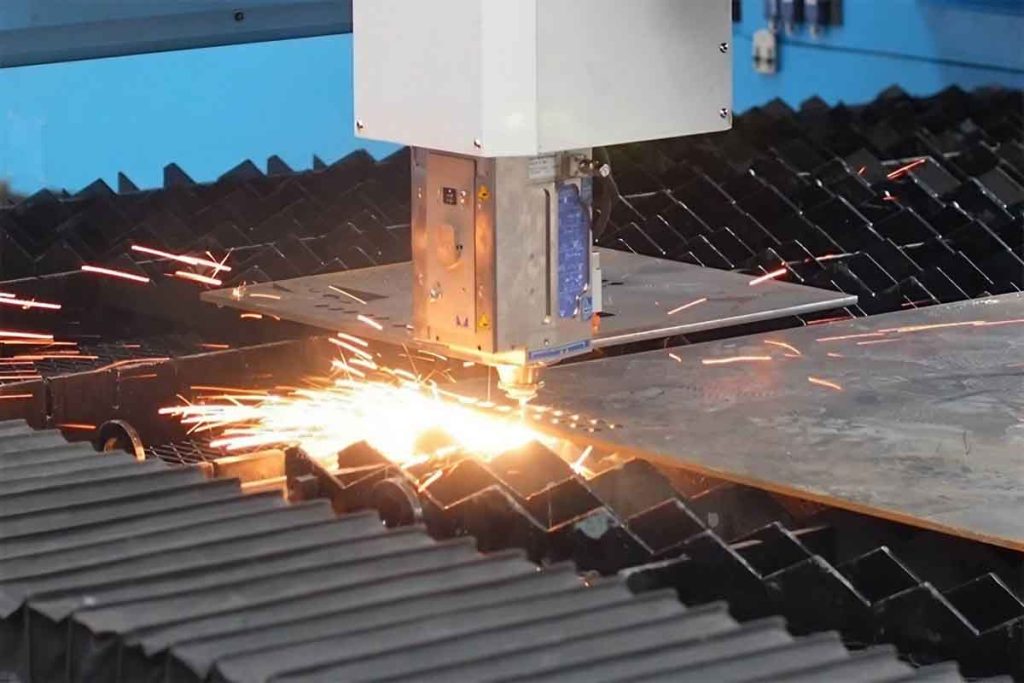Waterjet metal cutting is a technology that has revolutionized industrial manufacturing. For those in the field, this method offers a level of precision and versatility that other cutting techniques often cannot achieve. Businesses across various sectors are now adopting waterjet cutting for its efficiency and precision.
This article explores the ins and outs of this technique, providing insights on how it operates and why it has become a preferred method in the industry.

What is Waterjet Metal Cutting?
In simple terms, waterjet metal cutting uses a high-pressure stream of water, sometimes mixed with abrasive materials, to cut through metal. This technology allows for accurate, clean cuts without adding heat, preventing material distortion.
Why Choose Waterjet Cutting?
There are several reasons why manufacturers choose waterjet cutting. First is its versatility. It can cut through a wide array of materials including aluminum, steel, and titanium. Another reason is the absence of heat-affected zones (HAZ), preserving the integrity of the material.
How Does Waterjet Cutting Work?
The process begins with a pump creating a high-pressure water jet. The water is then mixed with an abrasive substance, usually garnet, ensuring that it can cut through even the toughest materials. The pressurized mixture exits through a nozzle, cutting the material efficiently.
The Role of Abrasives
While pure waterjet systems rely on water alone, adding abrasives increases the cutting power significantly. The abrasive particles, when accelerated by the water, grind through the metal, enabling the cutting of harder materials. More details about abrasives can be explored in the article Precision Cutting Methods.
Applications of Waterjet Metal Cutting
The versatility of waterjet cutting means its used across many industries. From automotive to aerospace and even in art and architecture for decorative purposes, the technology’s precision makes it invaluable. For more on how this technology is applied, visit Precision Metal Cutting Techniques.
Benefits in Industrial Manufacturing
In manufacturing, where precision is crucial, waterjet cutting provides unmatched benefits. It reduces material waste and gives designers the freedom to create intricate designs like those outlined in Benefits of Precision Cutting.
Challenges in Waterjet Cutting
While advantageous, there are challenges. The initial cost of machines and the need for skilled operators can be barriers. Yet, the long-term gains in efficiency and quality make it a worthwhile investment. More insights can be found here.
Future of Waterjet Metal Cutting
With advancements in technology, waterjet cutting continues to evolve. The future promises even more precise and faster machines, broadening the scope of what is possible. Stay updated with new developments through Cutting Methods.
Conclusion
Waterjet metal cutting represents a leap forward for industrial manufacturers seeking precision and versatility. Its adoption continues to grow, cementing its place as a cornerstone in modern manufacturing. Learn about further applications and benefits at Modern Metalworks.

FAQs
What materials can waterjet cutting handle?
It can handle a wide range of materials including metals like aluminum, steel, and even harder metals when abrasives are used.
Is waterjet cutting environmentally friendly?
Yes, the process is generally seen as environmentally friendly because it doesnt produce hazardous waste or emissions, and water used can often be recycled.
What industries benefit the most from waterjet cutting?
Industries such as aerospace, automotive, construction, and design benefit greatly due to the precision and versatility of waterjet cutting.
This article contains affiliate links. We may earn a commission at no extra cost to you.

